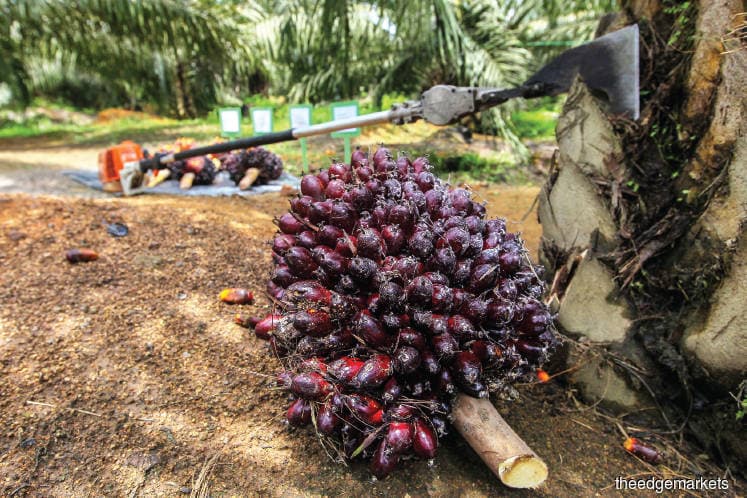
This article first appeared in The Edge Financial Daily on July 16, 2018
KUALA LUMPUR: Palm oil prices, which have fallen to their lowest in three years, are expected to remain under pressure in the second half of 2018 (2H18), with a limited increase seen, according to analysts.
On last Friday’s close, the benchmark palm oil third-month contract for September delivery fell RM38 to settle at RM2,159 per tonne, its lowest closing price in the futures market since September 2015. On a month-on-month basis, this translates into a sharp RM172 or 7.4% decline, from RM2,331 on June 12.
Several analysts told The Edge Financial Daily that a crude palm oil (CPO) price rally looks unlikely going forward, given various limitations.
Sathia Varqa, the owner of online publisher Palm Oil Analytics, said when contacted that more downward pressure on CPO prices is to be expected, and that lower prices should persist until mid-August.
“We think the average CPO [price] benchmark for 2H18 will be in the range of between RM2,100 and RM2,200,” he said, noting that CPO prices averaged RM2,442 in the first six months of 2018.
This is because the CPO futures market is heavily trading on “sluggish export demand, stubbornly high inventory levels, as well as a bearish soybean and soybean oil market”, he said, in addition to the seasonal trend of higher production.
Exacerbating the situation is the mega soybean harvest from the US and Brazil. That, coupled with the prospect of limited US exports, has added pressure on soybean oil prices, which is spilling over to palm oil prices, Varqa added.
According to the 2018 Acreage Report released by the US Department of Agriculture, the acreage of soybeans planted in the US in 2018 is projected to surpass total US corn acrerage for the first time since 1983, TA Securities observed in a July 11 note.
After noting the current high palm oil inventory levels, Alan Lim of MIDF Research cautioned in a phone conversation that the figure is expected to remain above two million tonnes per month for the rest of the year, which, he said, is above the historical average.
“The upside to CPO prices is limited due to the high palm oil inventory level that we have here in Malaysia, which is a sufficient representation of the global stockpile,” said Lim.
He added that the lower export duty for August, to 4.5% from 5% previously, would only give a slight boost in demand and prices. He forecast that CPO prices will trade at between RM2,150 and RM2,300 next month.
On July 10, official statistics by industry regulator Malaysian Palm Oil Board showed the country’s palm oil inventory as at end-June rising 0.83% to 2.19 million tonnes, versus 2.17 million tonnes in May 2018.
This was the first time the palm oil inventory — comprising CPO and processed palm oil — had risen since December 2017, a result of weaker exports and higher imports, which outpaced lower production. It said the 166.24% surge in palm oil imports was mainly due to higher purchases of processed palm oil.
Following the announcement, Malaysia lowered its export tax on CPO for August to 4.5%, from the 5% fixed for May to July. Prior to this, the export duty was suspended for the first four months of 2018.
For 2H18, assuming that Brent crude oil stays within the US$70 (RM283.50) to US$75 per barrel price range, with the monthly inventory not exceeding 2.5 million tonnes, and with soybean oil prices hovering around US$600 to US$700 per tonne, Lim said the research house expects CPO prices to stay at between RM2,100 and RM2,500 per tonne.
Some bright spots could be on the horizon
It is, however, not all doom and gloom.
A factor under the watch list for the sector is weather conditions, said Ivy Ng of CGSCIMB Research. She pointed to the Australian Bureau of Meteorology’s latest outlook, which noted that the probability of El Nino conditions forming has doubled to 50%, which may lead to lower rainfall in Southeast Asia, therefore indicating lower yields and supply.
Ng also highlighted the ongoing Sino-American trade spat as another key factor to look out for. China on July 6 imposed a 25% import duty on US soybeans, in retaliation against US tariffs on Chinese goods.
“This could lead to higher prices of soybeans and its related products in China, leading to weaker demand for soybeans, which could indirectly benefit palm oil in the medium term,” she wrote in a note released on July 10.
Similarly, Varqa of Palm Oil Analytics believes the decline in palm prices can be contained if China switches its import share from soybean oil to palm oil to meet the edible oil sector’s market demand.
Hong Leong Investment Bank Bhd is relatively optimistic about the commodity for the year and has maintained its average CPO price assumption of RM2,500 per tonne for 2018 and 2019.
“We expect CPO prices to improve in 2H18 [versus 1H18], supported by a weaker ringgit, which is supportive of palm oil prices,” said its analyst Chye Wen Fei in a July 11 note. The ringgit was trading at 4.0510 against the greenback at the time of writing.
Other supportive factors include the Indian government’s recent move to raise import duties on other soft oils, which has in turn narrowed the duty gap between palm oil and other soft oils.